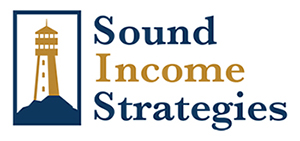[media-downloader media_id=”3996″ texts=”Download PDF” class=”cherry-btn”]
| Index | Month | YTD |
| Dow Jones | +0.17% | +11.79% |
| S&P 500 | 1.94% | +13.62% |
| NASDAQ | +2.69% | +16.79% |
| Barclay’s Agg | +1.92% | +2.94% |
10-Yr Treasury yield was 2.75%% at the end of February and 2.40%% at the end of March.
Markets
The stock market finished March and the first quarter of 2019 in rally mode. The S&P 500 closed the month at its highest level since October, while the Dow Jones Industrial Average saw its biggest gain since February 15th*—although the market overall remains down from its peak highs of 2018. Yet the stock market wasn’t really the big story for March. In fact, Wall Street (like most of the financial media) almost seemed to ignore the most important development in the financial markets last month—a development that I believe could have major implications for everyday investors.
It happened on March 20th, when the Federal Reserve made what almost seemed like an intentional move to flatten the yield curve. The yield curve was already nearly flat at the time, with the 10-Year Treasury yield down to 2.54%, barely higher than the current Fed funds rate of 2.5%. That being the case, the Fed reconfirmed its commitment to keeping additional short-term rate hikes on hold (as I predicted in my 2019 market forecast). However, in that same statement, the Fed also mentioned it was planning to discontinue its “unwinding” of quantitative easing this year.**
I was stunned because it was almost as if the Fed was saying: “Since we’re no longer able to raise short-term rates, we’re going to flatten the yield curve by driving down long-term rates!” Remember, one of the goals of the QE “unwinding” process was to manipulate long-term rates upward. So, by stopping the process, the Fed (whether intentionally or through simply a lack of common sense) is essentially choosing to reverse the goal of its manipulation.
Sure enough, within two days of the announcement, the yield on the 10-Year Treasury rate dropped by 30 basis points. Long-term rates across Europe also fell, some into negative territory. Currently, the yield on the 10-Year Treasury is at 2.4%, while short-term rates remain at 2.5%. This makes the yield curve now flat, or inverted.
While this situation could actually give the stock market a temporary boost, I believe this is perilous in the long-term. Banks and other lending institutions depend on a spread in interest rates to make money. When the yield curve flattens, banks tighten their standards, approve fewer loans, and when that happens, a domino effect toward recession and a major stock market drop can quickly follow.
Portfolio Transactions:
When managing your portfolio at SIS, we look for one of four possible “enhancement” trades while reviewing securities and possible transactions. Income generation is our primary goal for our clients, and we consider the following four portfolio enhancements before transacting: current yield, yield to worst (minimum projected annualized total return), interest rate risk, and default risk. The intents of these transactions are categorized as follows:
- Pay Me Now – Enhancing current yield
- Pay Me Later – Enhancing yield to worst
- Cover My Assets I. – Managing interest rate risk
- Cover My Assets II. – Managing default risk
We evaluate the transactions by determining whether they meet one, two, three, or all four enhancements. A baseball analogy for this: SINGLES, DOUBLES, TRIPLES, and HOME RUNS.
This month we swapped one of our preferred securities, National General Holdings and moved into safer bonds, EQM Midstream Partners. Non-bond clients sold their National General Holdings preferred securities and picked up another safer utility preferred security, CMS Energy Corp.
- Sold NGHCN 7.5% Perpetual (BB) @ 8.78% current yield
- Purchased EQM 4.125% 12/01/26 (Ba1/BBB-) @ 5.28% YTW
This is considered a DOUBLE
- Purchased CMS 5.875% 3/1/79 (Baa2/BBB-) @ 5.72% current yield
This is considered a DOUBLE
*“Rally Lifts Stocks to Highest Levels of Year,” Bloomberg, March 31, 2019
**“Fed Holds Line on Rates, Says No More Hikes Ahead This Year,” CNBC, March 20, 2019
*Note: The above trades were recent block trades and do not reflect all trades done on an individual specific basis. Sound Income Strategies, LLC is a registered investment advisor. Information presented is for educational purposes only and does not intend to make an offer or solicitation for the sale or purchase of any specific securities, investments, or investment strategies. Investments involve risk and, unless otherwise stated, are not guaranteed. Past performance is not an indication of future results. Be sure to first consult with a qualified financial advisor or tax professional about your specific financial situation before implementing any strategy discussed herein.You are advised to give independent consideration to, and conduct independent investigation with regards to, the information above in accordance with your individual investment objectives. Use of the Information is at the reader’s risk, is strictly intended for informational purposes in conjunction with the recipient’s due diligence, and should not be construed as a solicitation by Sound Income Strategies, LLC. Past performance will never indicate or guarantee future behavior. Sound Income Strategies, LLC does not represent or warrant that the contents of the document are suitable for you from compliance, regulatory, legal, or any other perspective. We shall have no responsibility or liability for your use or non-use of the document or any portion thereof. Sound Income Strategies, LLC is registered as an investment advisor under the Investment Advisors Act of 1940 and is regulated by the SEC. Sound Income Strategies, LLC and its affiliates may only transact business or render personalized investment advice in those states and jurisdictions where we are registered or otherwise qualified to do so.
